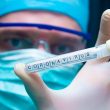This study sought to randomly compare the double-layer Roadsaver stent (Terumo) with the single-layer Carotid Wallstent device (Boston) in association with either distal filter-like embolic protection device FilterWire (Boston) or proximal protection device Mo.Ma (Medtronic) in patients with lipid-rich carotid plaques. This is a very interesting work because there are no head-to-head simultaneous comparisons between...
ECS Guidelines for COVID-19 Management
One of the first statements in this document points out these are not “regular guidelines” developed after thorough analysis of all the available evidence published since the last update. Instead, they are meant to provide temporary basic management pointers on how to handle different scenarios of cardiac patients in the context of the COVID-19 pandemic....
SOLACI-SBHCI 2019 Congress | International Joint Sessions
Prestigious Scientific Societies from all over the world will attend the Congress to discuss the latest advances in interventional cardiology. Discover the International Joint Sessions 01/08 | Paulista Room | 8:30 – 10:00 | Portuguese Society of Cardiology (APIC) Symposium – Acute Coronary Syndrome 8:30 – 8:42 – PCI in NSTEMI ACS: how and when...
MR CLEAN Registry: “Time is Brain” is a Far More Accurate than “Time is Heart”
Time to endovascular treatment after ischemic stroke is strongly associated to functional outcomes. This association could be even stronger than previously suggested in more select populations of controlled studies. These findings emphasize that functional outcomes after endovascular treatment could be improved significantly by reducing onset to treatment times. Randomized studies in select acute...
NSAIDs and Risk of Bleeding in Patients with Atrial Fibrillation
The use of nonsteroidal anti-inflammatory drugs (NSAIDs) is very frequent and many of these medications are sold over-the-counter, but they can expose patients with atrial fibrillation using warfarin or dabigatran to potentially dangerous bleeding. Such a combination is a “perfect storm” of sorts, since atrial fibrillation is the most frequent type of arrhythmia and its...
Protective Shield RADPAD Reduces the Radiation Dose Received by Operators in the Cath Lab
Despite technological developments, all people working at a cath lab are inevitably exposed to radiation and its effects. The radiation dose received by the operator is highly variable depending on procedure type, experience level, equipment used, patient characteristics, etc. Exposure to this scatter radiation may have deterministic effects, such as the onset of cataracts or...
Study Confirms Lead Shields Protect Cath Lab Staff from Radiation Exposure
The recent publication of several reports on risk of cataract, left sided brain tumors, subclinical atherosclerosis and chromosome damage among interventional cardiologists has raised increasing concerns about radiation exposure in the cath lab. Recognizing these risks has created a demand of these new forms of protection. Unfortunately, these have mainly been focused on the main operator,...
Important Study Detects Radiation-Induced DNA Damage in Operators After an Endovascular Procedure
In recent years, we have seen (both as witnesses and actors) an exponential increase in the number of fluoroscopically-guided cardiovascular interventions carried out by interventional cardiologists, electrophysiologists, and vascular surgeons. Not long ago, most pathologies treated with these procedures were the exclusive domain of open surgery. Now, a large number of patients can be treated...






